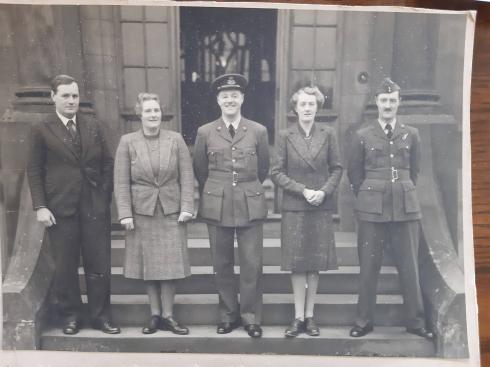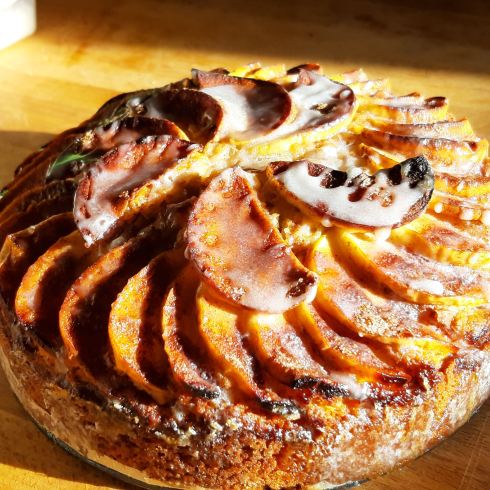I love my local farm shop. Let me give it a shout out.. it’s at Overton Farm in the Clyde Valley. Given the choice between spending a wee bit more per item at the farm shop, or spending a whole lot more in total (because I go off-list and end up buying things I don’t really need at the supermarket) I now always choose the farm shop. This means I more regularly run out of stuff like dry cat food, or domestos, but that’s ok. We have a car, and most things can wait till the weekend.
The farmshop isn’t exclusively local, so year round it’s possible to get those things that were seasonal treats in my childhood – peppers, mangoes, and even pears. But I like seasonal, and I have an urge to put things in jars when they are in season. Some time soon I am going to write a list of all the things I have in jars, so that I’m more likely to use them… they live in a drawer in a filing cabinet in a cupboard under the stairs. Yup, not really in an obvious place so I see a jar of, say spiced damsons, and think ‘that will go perfectly with the smoked mackerel I’ve just bought impulsively at the supermarket because we needed dishwasher tabs’. In fact I might just do that later this afternoon – I have the day off, and had planned to garden, but it’s grizzly grey weather and I’m something of a fairweather gardener, shaming though it is to admit that.
Anyway, back to seasonal and local and all that jazz. My seasonal treat at the farmshop on Saturday was a big bunch of rhubarb. I LOVE rhubarb; it’s that tart sharpness that just zings for me.
Thane Prince is one of my go to writers for any sort of a preserve. She currently can be seen in the BBC’s Great Allotment Challenge programme, but honestly I wouldn’t recommend that as your first experience of her. Watching someone, anyone, spooning out 10 globs of chutney from a jar and then tasting it, and diluting ten lots of cordial in water and sipping it is not my idea of good TV, no matter how lovely she may be, or how erudite her comments and criticisms are. Please BBC, try harder.
But of course she has a lovely recipe for Rhubarb Marmalade, with or without ginger. And that is what I settled on. Fortuitously I had just the right quantities of everything: rhubarb, sugar, oranges, pectin. And ginger. Why would I make it without ginger?
Rhubarb marmalade
From Thane Prince’s Jellies, Jams and Chutneys.
- 1kg rhubarb, washed and cut into even 1cm wee chunks
- 800g sugar
- 2 large oranges
- 125g liquid pectin
- about 3cm fresh root ginger, grated. You do have a ginger grater don’t you?
- Get prepared. Put a large plate into the fridge, so you can check for a set when the time comes
- Clean your jars in hot water, and pop them in a low oven to sterilise them
- Zest your oranges, and then juice them
- Put the rhubarb, sugar, orange zest and juice into a heavy non-reactive pot. Bring the mixture slowly to the boil and then simmer over a low heat for 5-8 minutes. The rhubarb should be soft and the sugar dissolved.
- Turn off the heat for a minute. Add the pectin. Stir gently so it’s all mixed in and then turn the heat back up. Bring to a good boil and cook for a further 2 minutes before testing if it’s set. At this stage my marmalade was still incredibly runny and it took a further 25 minutes before it started looking properly jammy and was anything near a set. And then of course it went just too far and my marmalade is just slightly more solid than I would like – I like it still squelchy.
- Once the marmalade has reached setting point, ladle it into the hot sterilised jars, seal and label.
You do know how to test for a set don’t you? I wouldn’t recommend using a sugar thermometer for this recipe – when my marmalade had reached setting point it was still far off the ‘jam’ stage on my thermometer, which is no doubt to do with the levels of pectin in the mix. Anyway, I test for a set by dropping a wee gob of the hot marmalade onto a cold plate (yes, that one you put in the fridge right at the beginning); leave it a wee second or two, and then push it with your finger. If it wrinkles it’s ready (or even over-ready); if it is just liquid and runs back into a puddle it needs more boiling.
So, why would anyone spend their Sunday afternoon making Rhubarb Marmalade? Easy… just try it, still warm on hot buttered toast. You will forget that anything else exists, and you’ll wish that you could do this every afternoon, and if you’re feeling special match it with a wee glass of fizz. My accompaniment was a perfect cup of Earl Grey tea, out of a fine china tea cup. Deliciousness.








